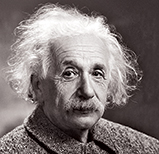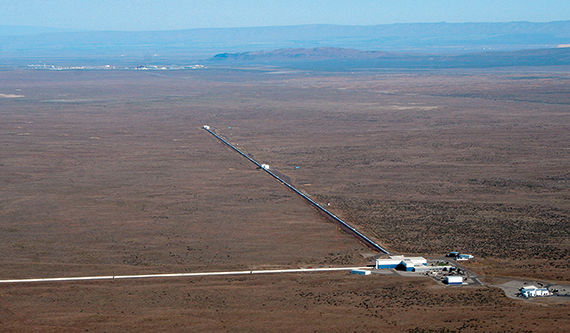Einstein and Gravitational Waves
Albert Einstein came up with his theory of general relativity in 1915, revolutionizing the way we understand gravity and establishing the rules of spacetime.
A year later he predicted gravitational waves — ripples in the curvature of spacetime that propagate as waves as they travel outward from a source like a black hole, transporting energy as gravitational radiation.
 “After his prediction, Einstein himself, along with most of the physics community, was confused about whether they were even real or not,” explains Northwestern astrophysicist Shane Larson. “He thought that no one would ever be able to detect them. The problem was that the physicists couldn’t decide how to actually measure the waves. They couldn’t imagine how to make an experiment nor could they compute what to do in an experiment.”
“After his prediction, Einstein himself, along with most of the physics community, was confused about whether they were even real or not,” explains Northwestern astrophysicist Shane Larson. “He thought that no one would ever be able to detect them. The problem was that the physicists couldn’t decide how to actually measure the waves. They couldn’t imagine how to make an experiment nor could they compute what to do in an experiment.”
It wasn’t until a 1957 conference held at Chapel Hill, N.C., that a young postdoc named Felix Pirani explained how scientists might one day be able to detect gravitational waves — by watching the motions of little tiny masses and measuring the distances between them.
In 1972 MIT astrophysicist Rainer Weiss published a paper that became the genesis for the Laser Interferometer Gravitational-Wave Observatory, a large-scale observatory that uses laser interferometers to detect gravitational waves from minute oscillations between pairs of suspended mirrors set into motion as the waves pass through the Earth.
After twin observatories in Hanford, Wash., and Livingston, La., were completed, LIGO conducted its first search for gravitational waves in 2002.

The LIGO detector in Hanford, Wash. Photo courtesy of the California Institute of Technology.
But it took until Sept. 14, 2015, for LIGO to make a detection, after a major five-year upgrade enhanced its sensitivity.
“The amazing thing about all this to me,” says Larson, is that “Einstein had no reason to be thinking about this, but he did. There was no experiment to be done. There was no application to technology, no reason he had to work it all out other than his own pure curiosity about the way the universe was put together.
“And here we are 100 years later, finally able to do experiments where we can confirm that this crazy idea that Einstein had actually is the way the universe works. It’s awesome. It’s a testament to what our brains are capable of.”
“Einstein would be beaming, wouldn’t he?” exclaimed France Córdova, director of the National Science Foundation at the press conference announcing the discovery. — S.R.



 Facebook
Facebook Twitter
Twitter Email
Email


